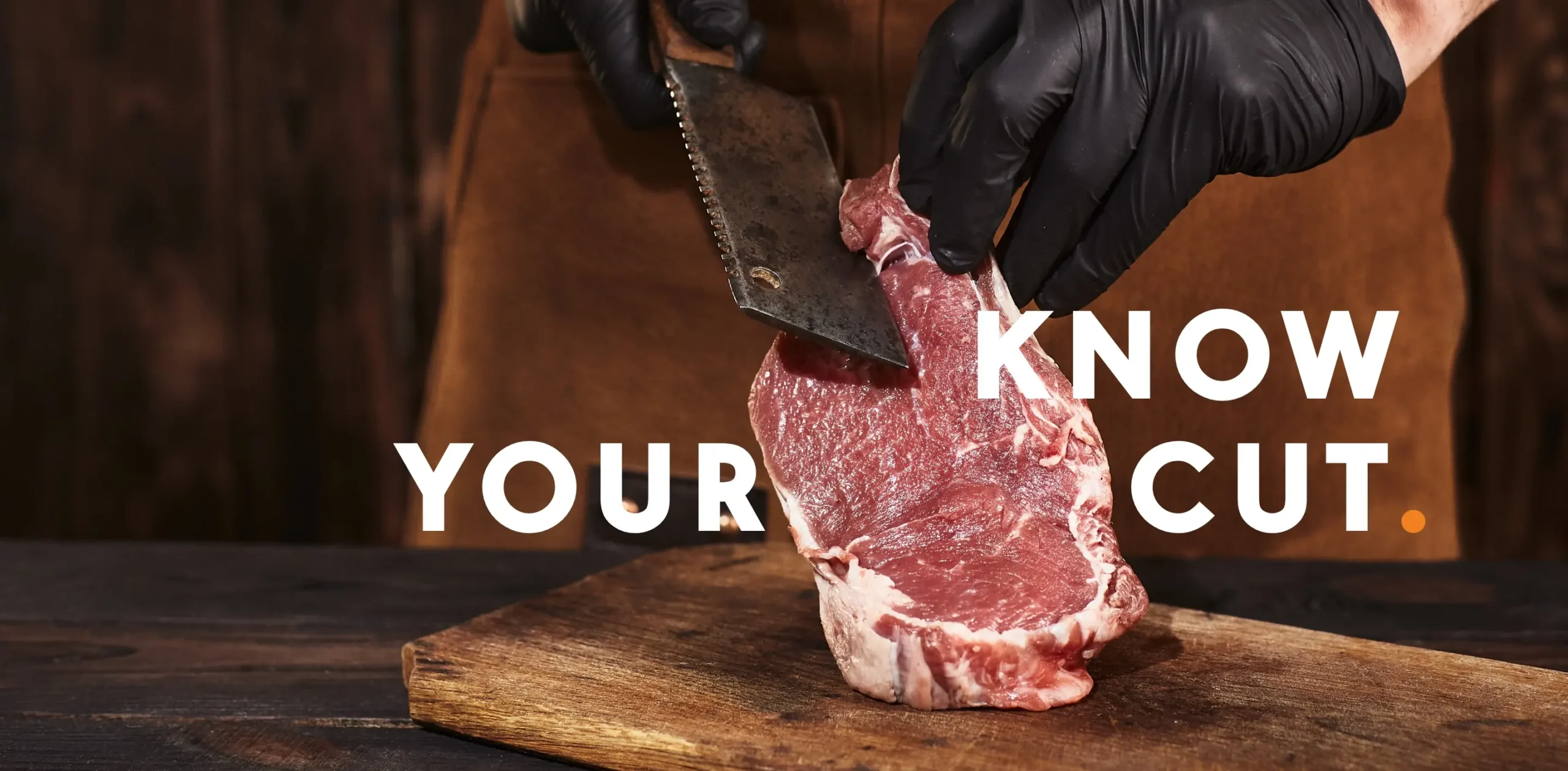
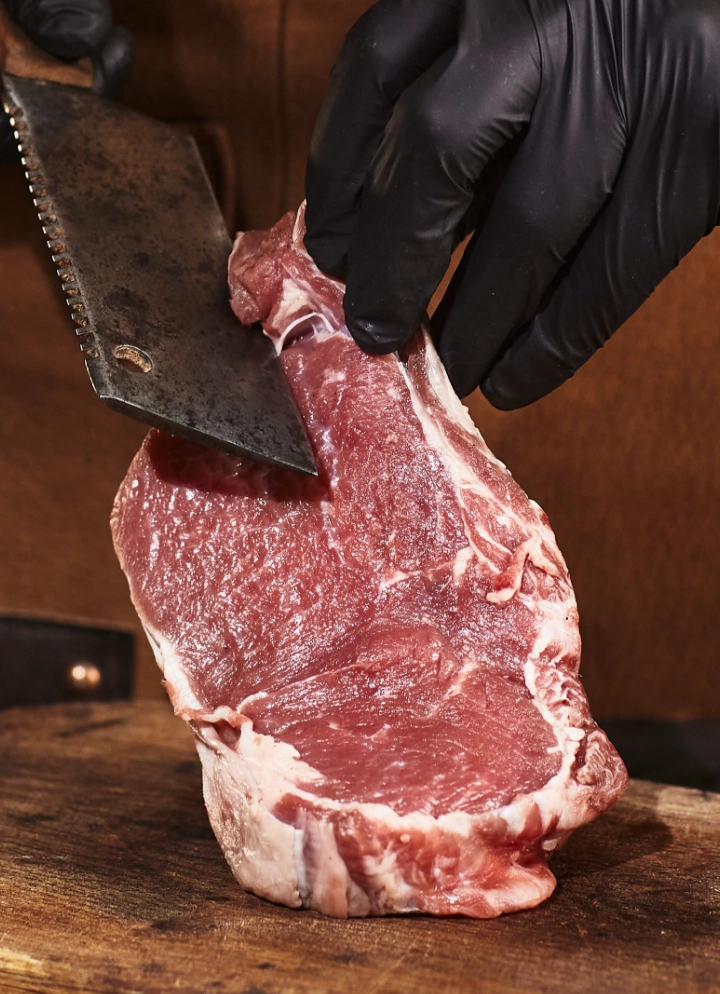

Click the white dots to find out more about each cut of meat
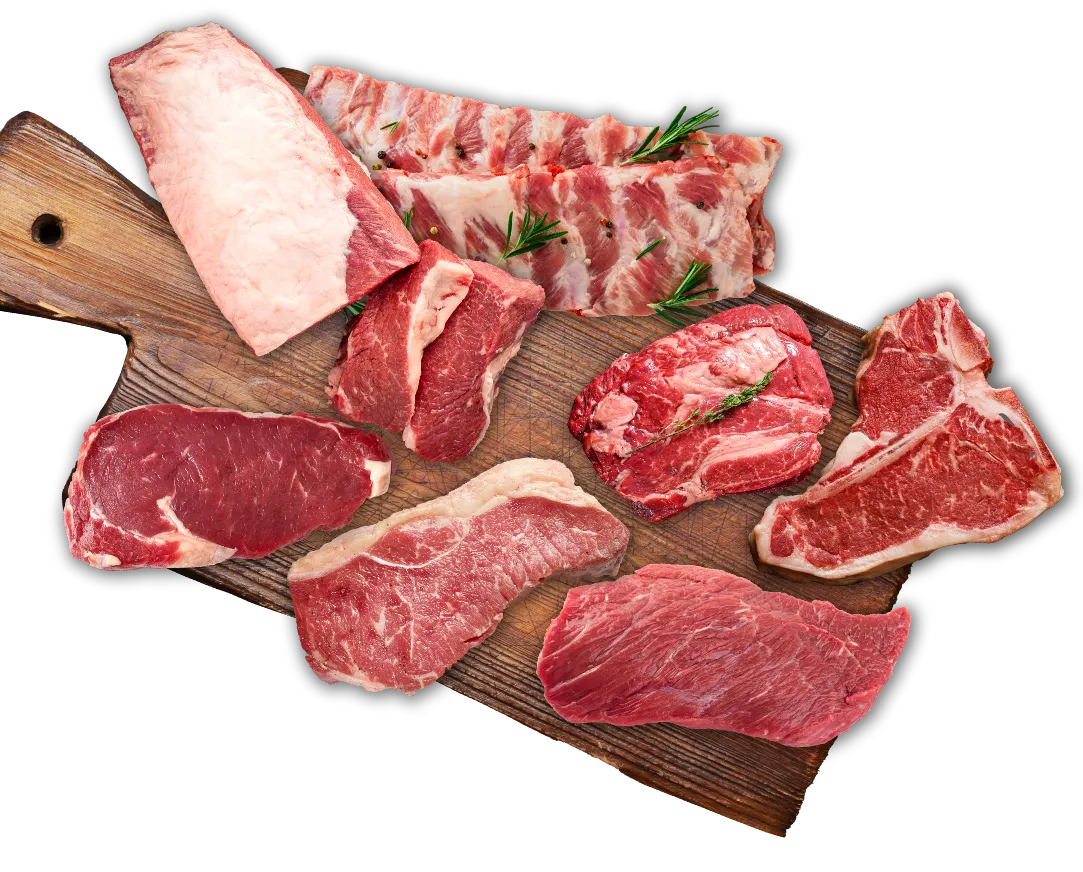
Ribs
Beef ribs can be divided into three categories depending on which area they come from: plate short ribs, chuck short ribs, and back ribs. Each cut of beef ribs is unique in its own right — from flavour to chewiness, to cooking method, all three deserve a moment in the spotlight.
brisket
Brisket is a cut of beef that comes from the lower breast or pectoral muscles of a cow. Because this area is so well-exercised, it makes for quite a tough piece of meat that’s full of connective tissue. This is why it’s best suited towards a low and slow cooking process
Sirloin
Cut from the mid-back between the ribs and rump, the Sirloin steak is characterised by its beefy flavour and good amount of marbling. The Sirloin steak is also known for its tenderness however it needs to be cooked carefully to ensure it doesn’t loose it. We would recommend frying the Sirloin on a high heat and leaving it to rest for around 5 mins to make sure its retains its tenderness.
Chuck
As South Africans we love our braais and a chuck steak when cut on the bone is best recognised as the unmistakable forequarter cut with lots of different muscles in one slice. It is the most sought after braai cuts by those in the know. Beef Chuck – On the bone as a steak or deboned as a whole muscle.
Rump
Cut from the back end of the cow, the muscle is frequently used which means the rump steak is not as tender as some of the other cuts and is very lean. Rump Steaks are generally marinated before cooking and are suited to frying and broiling.
Fillet
The fillet steak, also known as Filet Mignon, is widely regarded as the premium cut. It is from the lower back of the cow which is rarely used meaning the fillet steak is the most tender cut. It is also very lean, with minimal marbling which means that it is not as flavoursome as other cuts. Due to the tenderness of this steak, it is well suited to cooking on high heats for a few minutes each side, you don’t want to over cook this steak as it may loose some of its tenderness.
T-Bone
The T-Bone Steak is cut from the Sirloin and is comprised of sirloin and fillet separated by the T shaped bone. The pairing of the fillet and sirloin means that the T-bone steak has a lot of flavour.
When cooking a T-bone steak, as this steak contains two cuts of beef, the fillet is likely to cook faster than the sirloin. We recommend searing the steak on a high heat for a couple of minutes each side and the transfer into the oven to finish off.
Hover over the white dots to learn more
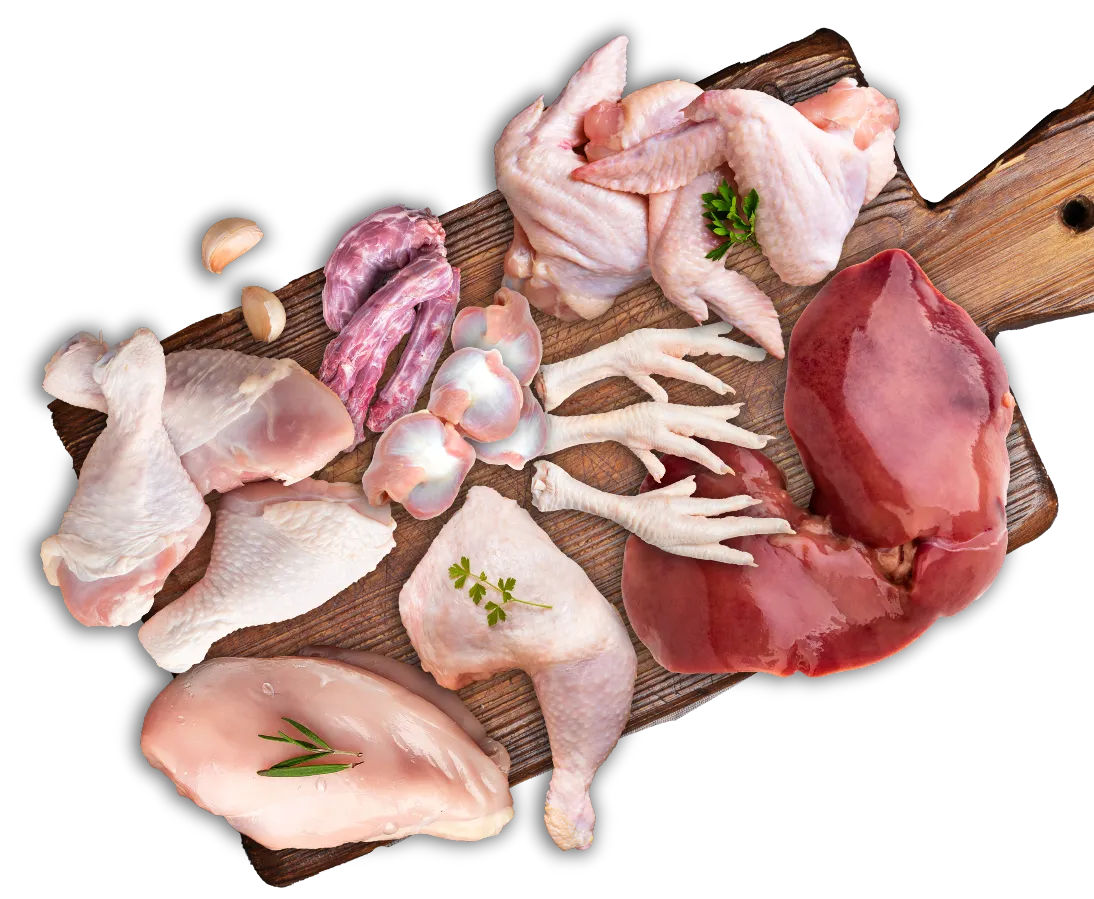
Wings
Each wing can be divided into three parts: the wing tip (the outermost section that is typically thrown away), the drumette (this looks like a small drumstick), and the wingette (some people call this part the "flat"). Chicken wings, which are considered white meat, are budget-friendly and easy-to-prepare.
Necks
Chicken neck is a delicious but cheaper cut of meat, providing protein and lots of flavour at a fraction of the cost. Combined with cooked veggies and tomato sauce this dish is a winner!
Liver
Liver is organ meat that come from chickens. The livers are actually loaded with lots of nutrients like folate, iron and biotin that perform a multitude of functions in keeping the body healthy
Feet
Chicken feet consist of skin, cartilage, tendons, and bones. Even without providing much meat, they're high in collagen — the most abundant protein in your body. This collagen content may help relieve joint pain, aid skin health, and prevent bone loss.
Thighs
Each leg consists of two dark meat cuts: thighs (the top portion) and drumsticks (the bottom portion). You can buy leg quarters — which includes a thigh, a drumstick, and a portion of the back — or you can buy drumsticks and thighs separately. Leg meat is generally less expensive than breast meat. Legs are fattier than breasts, so they're quite juicy and flavourful when cooked correctly.
Gizzards
Gizzards are the muscular stomach of a chicken. They have a tough, chewy texture that benefits from long, slow cooking methods. Gizzards are an affordable source of protein and deliver a unique, savory flavor. Often found in stews, soups, or fried preparations, they are a versatile addition to a variety of dishes.
Drumstick
Chicken drumsticks are the bottom part of the chicken leg (the top part is the thigh). They're often cooked in the same way as thighs (bone-in and skin-on) and they deliver the same meaty, juicy flavour.
Breasts
The breast is a lean cut of white meat found on the underside of a chicken. A whole breast includes two halves, which are usually separated and sold individually. The breast is loosely attached to a thin muscle called the tenderloin
Move your mouse over the different cuts of meat to find out more
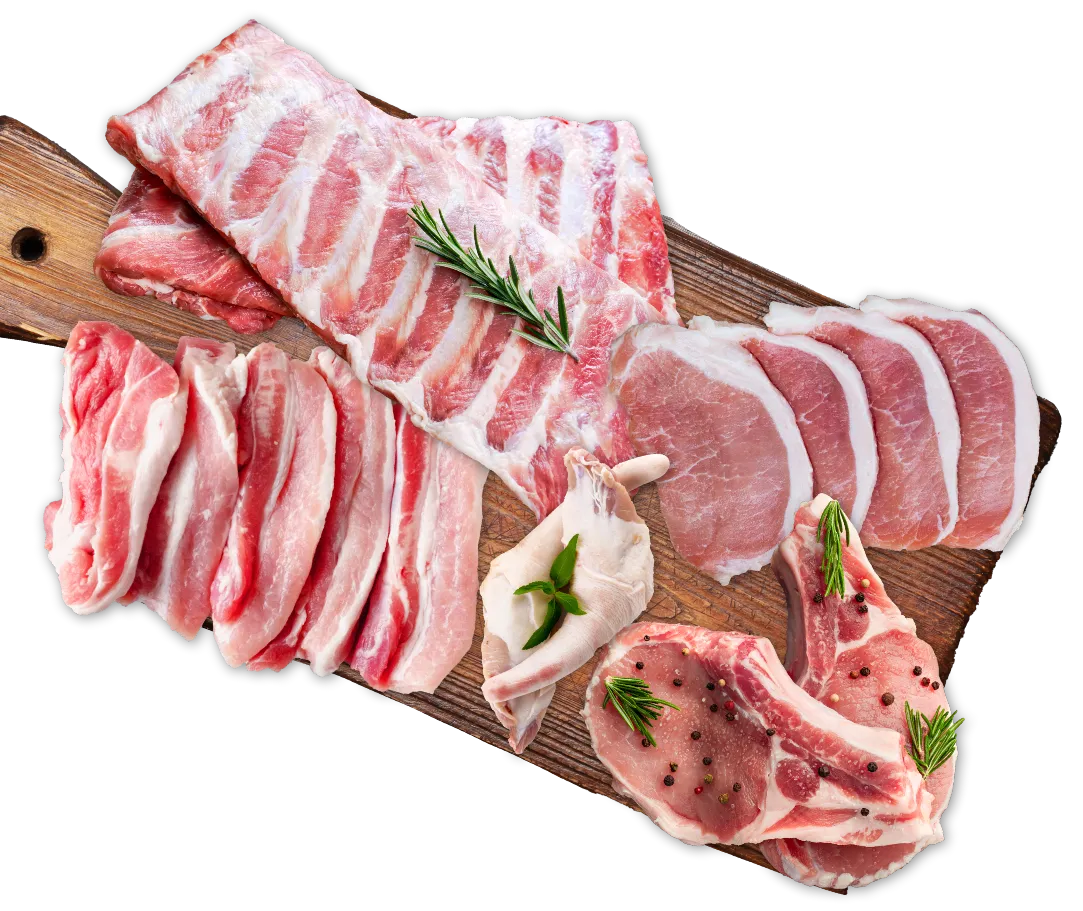
RIBS
The three main types of pork ribs are spare ribs, baby back ribs, and St. Louis Ribs. There are a few key differences to keep in mind: spare ribs have larger, meatier (with more bone and fat) spares, baby back ribs come from the rear loin region, and St. Louis ribs are trimmed spare ribs.
RASHERS
Cut from the loin - Pork rashers offer not only great taste, but serious value for money too. Their marbled structure means that the layers of fat in-between the tender meat will melt the pork rashers while they cook on the braai or under the grill.
For crispy outer skin make incisions with a sharp knife or scissors before grilling or braaing. Another great tip is to roll up the rashers and skewer them into pinwheels for a tasty starter that can be handed around.
TAILS
Pork tails are great for dental cleaning and contain vitamins and minerals known to promote muscle growth, exercise performance and maintenance. Unlike oxtail, pork tails come with the skin intact so that each segment is a perfect cross-section of skin, fat, tendon, and meat. It is low in sodium and high in protein.
SHOULDER CHOPS
The shoulder is a tender, succulent cut of pork known for its excellent flavour and juiciness. This cut contains collagen and a small amount of marbling.
Many expert cooks swear by pork shoulder to make the perfect pulled pork
LOIN CUTS
Pork loin is a tender cut of meat that can be enjoyed with or without bones.
Loin steak are well known for their delicious fat layer on the outside and tender, lean piece of meat on the inside. Pan-fried loin chops make the perfect quick family dinner and almost any sauce will complement them.
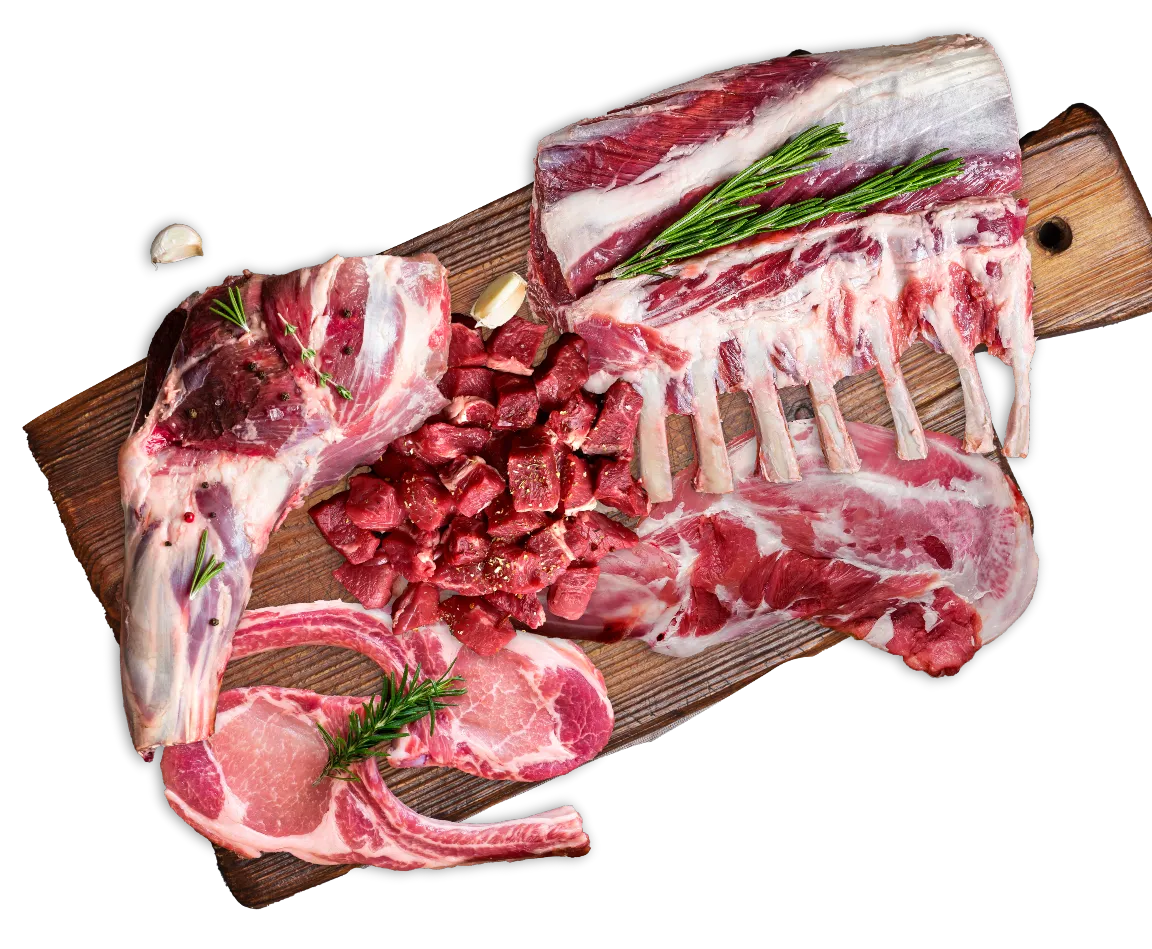
RIBS
There are two main types of lamb ribs commonly found:
Rack of Lamb Ribs: These ribs come from the upper part of the lamb's ribcage and are known for their tender and juicy meat.
Lamb Spare Ribs: These ribs are obtained from the lower part of the lamb's ribcage and have a rich, meaty flavour.
FOREQUARTER
The forequarter chop is prepared from the side of the lamb. It's made up of many cuts including the neck, shank and shoulder rack. This economical cut is best slow cooked using either a moist method, such as braising or stewing, or by slow roasting. Forequarter chops are the largest lamb chops available.
LAMB STEW
Shoulder or leg of lamb: both of these cuts are perfect in a stew or casserole when diced. Meat from the shoulder needs to be trimmed of excess fat first; while meat from the leg gives neater, leaner pieces of meat than the shoulder. Both are meltingly tender with a fantastic flavour.
LAMB SHANK
Lamb shank is a tough cut from the lamb leg that becomes tender and juicy with slow and low cooking. The foreshank comes from the front legs and is smaller than the hind shank, which comes from the back legs and is much meatier.
LAMB CHOPS
Lamb chops or cutlets are the most expensive cuts of lamb, but are incredibly delicious and tender. They are taken from the ribs of the lamb and cooked individually, normally over a grill or a barbecue. When a number of them are left together and cooked as a whole, they're called a rack of lamb